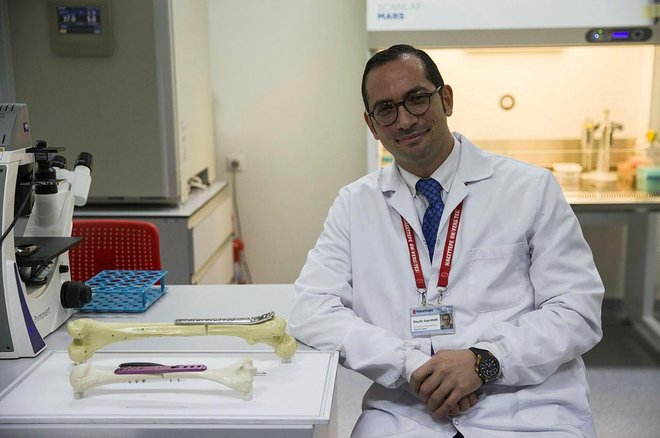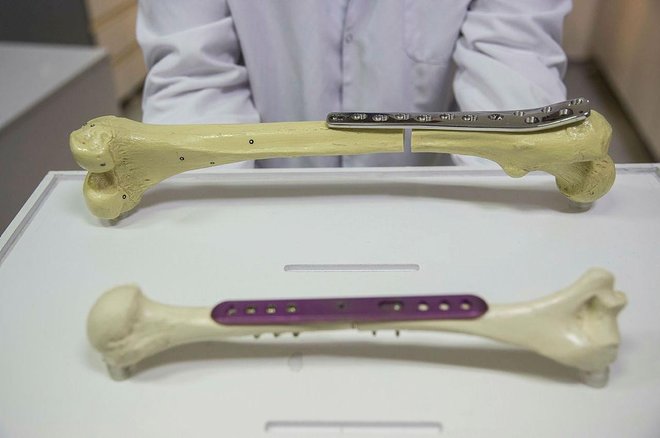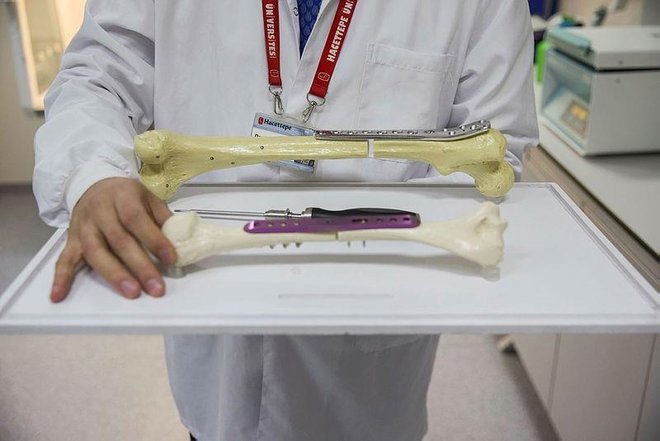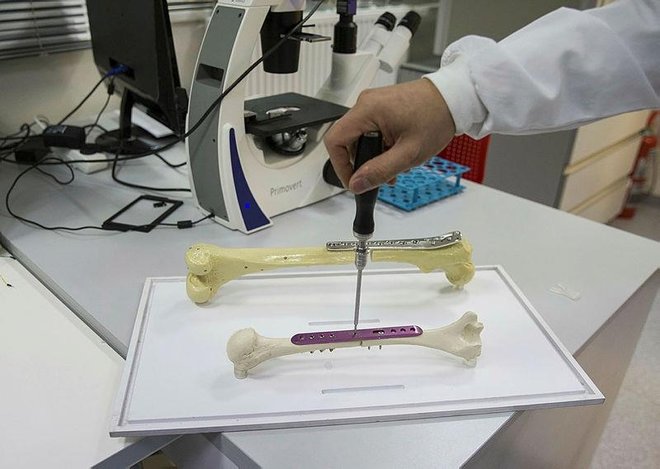A Turkish doctor has secured a patent for an innovative new bone-lengthening technique to help cancer and accident victims.
The technique, invented by Dr. Gazi Huri of Hacettepe University in capital Ankara, has been successfully tested on animals and attracted great interest in both the U.S. and Europe.

"In our study launched in 2012, we developed a next generation implant that extends the bone length following fractures and tumors causing bone loss or shortening," Huri, recipient of the 2018 Turkish Academy of Science (TUBA) young scientists award, told Anadolu Agency.
Noting that bone lengthening might be necessary when a bone tumor is removed from the body or a bone is lost due to accidents, Huri said that the traditional method for bone lengthening required building a scaffolding system outside of the damaged bone, which caused discomfort for patients.

"Thanks to the adjustable mobile plaque, we can lengthen the bone by one millimeter in a single session, or gradually [up to 4 cm]," he said, adding that his new method was more efficient compared to the traditional methods due to its mobility.
Huri said that prototypes of the implant were produced through 3D printers and these prototypes experimented on bone models.

Huri pointed out that they had obtained the international patents valid in the U.S., Europe, and Japan after detecting that the mobile bone plaque did not have an international equivalent.
"We created a bone defect of three centimeters in a sheep's tibia, then implemented our mobile bone plaque technique. Later, with the segment transfer technique, we made a millimeter long shift in the bone on a daily basis and monitored the animals for four months.

"At the end of this period, we saw that three centimeters long bone defects were fully closed. In addition, we have presented our study to one of the leading orthopedics and traumatology congresses of Europe," he added.
When asked if this new method could be used by those seeking body lengthening, Huri said that he would not apply this method for cosmetic purposes as it was not ethical.